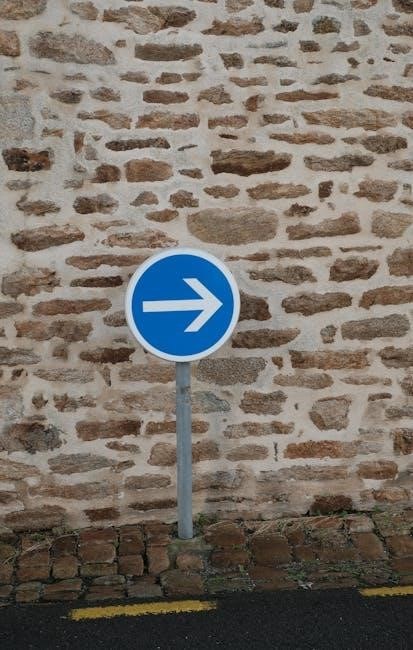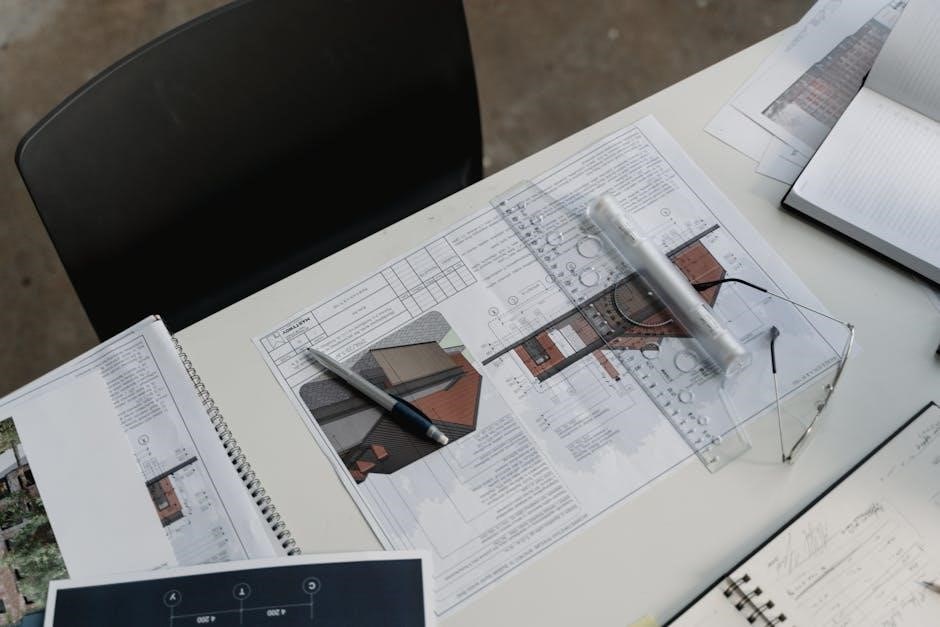Phyrexia: All Will Be One introduces an aggressive, fast-paced draft format with powerful synergies and combo potential, offering strategies for both experienced players and newcomers alike.
1.1 Overview of the Set and Its Significance
Phyrexia: All Will Be One is the latest expansion for Magic: The Gathering, released on February 10, 2023, with digital versions available from February 7. This set introduces an aggressive, fast-paced draft format, emphasizing artifact synergies and proactive strategies. It continues the Phyrexian storyline, exploring themes of corruption and resistance. The set features 265 cards, including powerful rares and impactful commons, with unique mechanics like oil-slick raised foil treatments in the Complete Edition. Its significance lies in its competitive potential and its role in shaping the current metagame, making it a must-play for both casual and competitive draft enthusiasts.
1.2 Importance of Drafting in Magic: The Gathering
Drafting is a cornerstone of Magic: The Gathering, offering a dynamic and skill-intensive way to play. It challenges players to think critically and adapt quickly, as they build decks from scratch. Unlike constructed formats, drafting emphasizes strategy over deck preparation, making it a unique test of adaptability and card evaluation. For new players, it provides an accessible way to learn the game without needing a pre-built deck. Drafting also fosters a sense of community, as players collaborate and compete in a shared experience. It’s a key part of Magic’s appeal, blending fun and competition for all skill levels.

Understanding the Draft Format
Drafting is a Limited format where players open booster packs, selecting cards to build a deck. It emphasizes adaptability and strategic card evaluation, offering a unique Magic experience.
2.1 What is Drafting and How Does It Work?
Drafting is a Limited format in Magic: The Gathering where players open booster packs, selecting cards to build a deck. Each player picks cards in turns, shaping their strategy based on available options. The process emphasizes adaptability and strategic card evaluation. Typically, a draft involves three booster packs, with players passing the remaining cards to others. The goal is to construct a cohesive deck that leverages synergies and power. This format tests players’ ability to think critically and adjust to the cards they receive, making it a popular and dynamic way to play the game.
2.2 Structure of a Phyrexia: All Will Be One Draft
A Phyrexia: All Will Be One Draft typically involves 6-8 players, each opening three booster packs. Players take turns selecting cards, passing the remaining pack to the left or right. The direction alternates between rounds to add variety. After all cards are picked, players build a 40-card deck using only the selected cards. The format emphasizes adaptability, as players must adjust their strategy based on available cards. The set’s aggressive design and artifact synergies make pacing and early-game decisions critical. Understanding the structure helps players navigate the drafting process effectively.

Top Commons and Their Impact
Key commons like Plated Onslaught and Cephalopod Sentry dominate early strategies, providing consistent value and enabling aggressive starts in artifact-focused decks, crucial for success in the format.
3.1 Key Commons for Each Color Combination
The top commons in Phyrexia: All Will Be One vary by color pair, with White/Blue excelling through artifact synergy via Cephalopod Sentry and Plated Onslaught. Boros (Red/White) leverages aggressive creatures like Skilled Sapper and Ionize for early pressure. Dimir (Blue/Black) relies on removal and card draw with Besoin and Voidsnare. Rakdos (Red/Black) benefits from sacrifice synergies with Corpse Explosion and Eaten Alive. Gruul (Red/Green) uses ramp and large creatures like Kazandu and Verdant Force. These commons define the draft’s power level and strategic direction.

Archetypes and Strategies
Phyrexia: All Will Be One features aggressive archetypes, with White/Blue artifact synergies and Boros’ fast creatures. Removal spells are crucial for disrupting opponents’ strategies effectively.
4.1 Overview of Two-Color Archetypes
Phyrexia: All Will Be One Draft introduces several two-color archetypes, each with unique strategies. White/Blue artifact decks utilize synergies between creatures like Plated Onslaught and artifact-enhancing cards for consistent board control. Boros, combining red and white, focuses on aggressive low-curve creatures to overwhelm opponents quickly. Other combinations like Azorius (blue/white) highlight evasion and card draw, while Gruul (red/green) emphasizes large creatures and trample effects. Each archetype requires specific card selections to maximize effectiveness and maintain a cohesive game plan.
4.2 White/Blue: Artifacts and Synergies
White/Blue decks in Phyrexia: All Will Be One Draft excel by leveraging artifact synergies. Cards like Plated Onslaught and Cephalopod Sentry create a formidable board presence, supported by artifact-enhancing effects. This archetype thrives on consistency, with creatures that synergize well together, enabling both defensive and aggressive plays. Early picks should focus on artifact-centric cards to build a cohesive strategy, while also looking for card draw and mana reduction effects to maintain tempo. Properly drafted, White/Blue artifact decks can dominate through their ability to control the board and generate card advantage.

Draft Strategy and Best Practices
Mastering Phyrexia Draft requires proactive strategies, focusing on early picks, and adapting to the table’s flow. Prioritize consistency and curve management for optimal deck building.
5.1 Early Picks and Building Your Deck
Early picks are crucial in Phyrexia Draft, as they set the foundation for your deck. Prioritize high-impact commons and uncommons that offer immediate value or enable key synergies. Removal spells and creatures with evasion or utility are top targets. Signal your colors early to discourage others from following suit. As you draft, focus on building a cohesive strategy, whether it’s an aggressive archetype or a more controlling approach. Evaluate synergies and card quality to ensure your deck has a balanced curve and enough interaction for the format. A strong start sets you up for success in the later rounds.
5.2 Importance of Removal Spells
Removal spells are vital in Phyrexia: All Will Be One Draft due to the set’s aggressive nature and low curve. These spells help you survive the early game and protect your threats. Prioritize versatile removal that can target multiple creature types or artifacts, as they provide the most value. Cards like Dismantle or Kathari Sanctifier are excellent for controlling the board. Having removal ensures you can disrupt opponents’ plans and maintain tempo. A well-timed removal spell can turn a losing position into a winning one, making them indispensable in this fast-paced format. Always draft removal early to stay ahead.

Synergies and Combo Potential
Phyrexia: All Will Be One excels in artifact synergies and combo potential, rewarding players for building cohesive decks that amplify card interactions and create powerful plays.
6.1 Key Synergies to Look For
In Phyrexia: All Will Be One, artifact synergies dominate, with cards like Plated Onslaught and Cephalopod Sentry enabling powerful plays. White-Blue artifact decks thrive on interactions between creatures and equipment, while removal spells like Escaped Experiment clear paths for combo potential. Aggressive strategies benefit from low-curve builds, rewarding proactive deck-building. Look for synergies that amplify card interactions, such as artifact-enhanced creatures or token generation, to maximize your deck’s efficiency and create explosive turns.
Pacing and Curve Management
Aggressive decks reward low curves, enabling early threats and proactive plays. Manage pacing by balancing creatures with removal to control tempo and maintain board presence effectively.
7.1 Understanding the Importance of Pacing
Pacing in Phyrexia: All Will Be One is crucial due to the set’s aggressive nature. A well-balanced deck with a mix of early-game threats and mid-game removal ensures consistent pressure. Proper pacing prevents opponents from stabilizing, while a curve that peaks at three mana maintains tempo. Aggro decks thrive by curve-ing out, while slower strategies risk falling behind. Understanding pacing helps you sequence plays effectively, ensuring you’re always applying pressure without overextending. This balance is key to success in the fast-paced environment of this draft format.
Late-Game Preparation
Building toward the late game involves balancing early aggression with sustainable card advantage, ensuring you have high-impact threats to close out matches after initial waves.
8.1 Building Toward the Late Game
Building toward the late game requires balancing early aggression with sustainable card advantage. Prioritize high-impact threats like powerful creatures or game-changing artifacts. Draft cards that provide late-game value, such as card draw or token generation, to maintain momentum. Removal spells and flyers are crucial for controlling the board. Focus on synergy between your early and late-game pieces to create a cohesive strategy. Adaptability is key, as the late game often hinges on outvaluing your opponent. Ensure your deck has a mix of immediate and delayed payoffs to secure victory in longer matches.
Tips for New Players
Start with a clear strategy, prioritize removal and creatures, and adapt as you learn. Focus on synergy and pacing to build a cohesive, competitive deck efficiently.
9.1 Avoiding Common Mistakes
New players often overlook card synergy and pacing, leading to inconsistent decks. Avoid overvaluing high-impact cards at the expense of consistency. Don’t neglect removal spells, as they are crucial in aggressive formats. Overcommitting to a single archetype early can backfire if the draft doesn’t support it. Be cautious of taking too many creatures without considering mana curve balance. Additionally, mulligan aggressively for playable opens, especially in fast-paced formats like Phyrexia. Prioritize adaptability and focus on building a cohesive strategy rather than chasing individual card power.
Phyrexia: All Will Be One offers a dynamic draft experience, emphasizing aggressive strategies and synergies. Adaptability and focused deck-building are key to success in this fast-paced format.
10.1 Summary of Key Takeaways
Phyrexia: All Will Be One draft excels with aggressive, low-to-the-ground strategies and artifact synergies. Prioritize removal spells and adaptability while drafting. Focus on two-color archetypes like White/Blue for consistent wins. Understanding pacing and curve management is crucial for success. Avoid overcommitting to complex combos early and instead build a cohesive deck with clear synergies. Stay proactive, as the format rewards aggressive play. New players should focus on basics like card advantage and avoiding common pitfalls. With practice and adaptability, players can master this fast-paced, rewarding draft format.

Additional Resources
Explore video guides, detailed archetype breakdowns, and strategy articles online for deeper insights into mastering the Phyrexia: All Will Be One draft format effectively.
11.1 Recommended Guides and Videos
For a deeper dive into the format, check out video guides and articles offering detailed archetype breakdowns and strategies. Many content creators provide insights into top commons, synergies, and draft tips. Platforms like YouTube feature in-depth analyses, while strategy websites offer comprehensive overviews. New players can benefit from beginner-focused guides that explain fundamental concepts and common pitfalls. Additionally, experienced players share their draft experiences and high-level strategies, emphasizing the importance of pacing and removal spells. These resources are invaluable for refining your approach and mastering the Phyrexia: All Will Be One draft format.